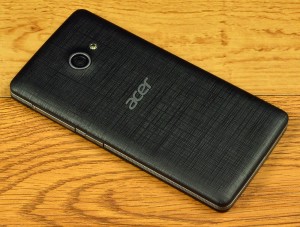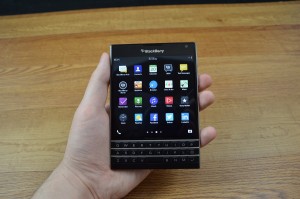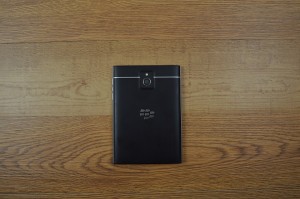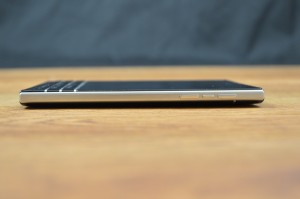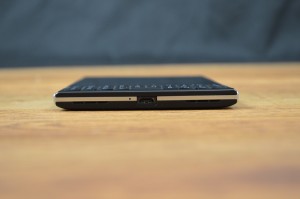Motorola has the budget phone market figured out, evident by devices like the Moto E and the Moto G iterations. These phones, while obviously nowhere near the top-of-the-line in terms of performance and features, still managed to impress thanks to their quality and reliability.
Now, Motorola is looking to continue that trend with its latest lower-tier offering, the Moto G4 Play. Thanks to Motorola’s existing reputation and an attractive price tag of only $150 unlocked, the G4 Play could be good choice for those looking for a cheap phone that isn’t a hopeless piece of trash.
Read this Motorola Moto G4 Play review to see if it’s actually worth your consideration and a small chunk of cash.
Build & Design
The Motorola Moto G4 Play’s build is about as vanilla as it gets; this thing won’t win any prizes for innovation. That isn’t entirely a bad thing, though, because the Moto G4 Play is a manageable size and comfortable to hold. And besides, when it comes to budget devices, playing it safe and keeping it basic makes sense, since the target market is most likely looking for a smartphone that just works.
The Moto G4 Play is modestly-sized at 5.69 x 2.83 x 0.39 inches, weighing 4.83 ounces. This offers just enough heft to make it feel good in the hand without going overboard. The device sports a slightly textured, black back panel, which can be removed, offering access to the micro-SIM and microSD card slots. The one pleasant surprise: the design is splashproof, which adds a touch of ruggedness to the Android smartphone.
The only physical buttons are the textured power/standby switch and the volume rocker, which are both located on the right side of the device. The front-facing and rear facing cameras are appropriately located, with the former above and to the right of the display and the latter centered toward the top of the phone’s rear. The top edge plays host to a 3.5mm headphone jack, the microUSB charging port is located on the bottom, and the left edge is devoid of any buttons or ports.
Display & Speakers
The Motorola Moto G4 Play has a 5-inch IPS LCD display with a 1280 x 720 resolution, resulting in 294 pixels per inch. The flagship Android devices top 500 ppi, and the display is a Moto G4 Play weak spot. It’s not terribly bright, even on max settings, and visibility in bright light is poor. Its middling resolution doesn’t do it any favors either, as it’s readily apparent even without looking at detailed images or websites. Contrast and colors look fine though, even if the whites lean a little toward the blue side of the spectrum.
As for the speakers, there aren’t any beyond the single speaker grill located directly above the display. The sound quality of the lone speaker is exactly what you would expect: tinny and not particularly powerful. HTC BoomSound this is not. The microphone doesn’t even get its own grill, and is instead just a pinhole placed near the lower right-hand corner of the phone’s front face.
Moto G4 Line
Motorola offers three smartphones in the 2016 Moto G lineup: the $250 Moto G4 Plus, $200 Moto G4, and $150 Moto G4 Play. The G4 Plus and G4 both have larger 5.5-inch displays with full HD resolutions, more powerful eight-core processors, Turbo charging, and more design options. The G4 Plus has a 16-megapixel camera and comes with either 16GB or 64GB capacity. The G4 has a 13-megapixel camera and comes with either 16GB or 32GB capacity.
All of them offer great price-to-performance ratio, considering flagships like the iPhone 7 and Samsung Galaxy S7 edge costs more than $700, and the high-end Moto Z handsets start at $400.
Performance
Underneath the hood, the Moto G4 Play is powered by a quad-core, Qualcomm Snapdragon 410 that clocks in at 1.2 GHz. It also comes equipped with 2GB RAM.
The specs are modest (there’s a substantial gap between the Moto G4 Play’s power and those in the upper echelon), but not unreasonable for a budget device. The Moto G4 Play scored 510 and 1336 on the Geekbench 4 single-core and multi-core tests, respectively, and a 773 on the compute GPU test. To put this in perspective, Samsung’s Galaxy S7 flagships scored 1687, 3945, and 6185 on those tests, respectively.
Those are just numbers, though. In reality, the Moto G4 Play performs perfectly fine in that it offers precisely the type of OK performance you would expect of a $150 phone. We never encountered any navigation hiccups with our Motorola Moto G4 play review unit, and simple applications ran smoothly. Meanwhile, more intensive affairs occasionally ran into some hitches; games would stutter and load times were definitely on the longer side.
Battery
Considering its manageable size and price, the Moto G4 Play comes with a surprisingly beefy 2800mAh Li-Po battery that will easily last you two days with casual use, and it’s replaceable.
In terms of more concrete metrics, we also performed our usual test of seeing how long a full charge lasted while streaming Netflix over Wi-Fi with the display brightness set to max. Our Motorola Moto G4 Play review unit was able to stream for 8 hours and 8 minutes on a single charge. That’s an impressive length of time (anything over 8 hours is good) that’s likely owed to the not-very-bright and small display, also its lower pixel density.
Connectivity
The Moto G4 Play works on all the major carriers, and most minor carriers as well. It takes micro-SIM, and nano-SIM with an adapter (sold separately). It supports single-channel 802.11 b/g/n Wi-Fi (higher-end devices support dual-channel 802.11 b/g/n/ac Wi-Fi), and Bluetooth 4.1 LE. There is no wireless charging or NFC support, like you’d find on more expensive handsets.
Software
We’ve praised Motorola for its smartphones with a nearly pure Android experience, only adding features that serve to enhance the user experience rather than bogging it down. Luckily, that still holds true here.
The Moto G4 Play comes preloaded with Android 6.0.1 Marshmallow out of the box, with Moto’s take virtually identical to stock Android. The only noticeable difference is the Moto G4 Play standby screen, which can be modified to show notifications “at a glance” that fade in and out while the screen is off.
One other Moto feature is the ability to shrink the screen by swiping up from the bottom of the display, allowing for more comfortable one-handed use. A tap in the black border that forms around the shrunken display returns it to its full size. Like the “glance” notifications, this is actually pretty useful and makes life much easier, especially for folk with smaller mitts.
Other Moto smartphones, like the 2015 Moto X, have more Moto enhancements, but the “glance” notifications and shrinking screen are the only two offered on the G4 Play. And you know what? That’s just fine. Better to err on the side of leanness with budget smartphones. And the best part about these Moto features is that if you’re not into them, you can always just turn them off.
Thankfully, Motorola also remained true to form with its dearth of bloatware on the Moto G4 Play. Aside from an FM radio app and its Moto app that allows users to adjust the aforementioned settings, the only software that comes preloaded on the phone is the standard suite of Google apps.
This is probably for the best given that, at most, the Moto G4 Play only comes with 16GB of onboard storage. So it’s nice that between the low-key nature of Moto and the minimal additional software, users are still left with a decent amount of free space; out of the box, our Motorola Moto G4 Play review unit had 10.4GB capacity available.
Camera
The Moto G4 Play’s 8-megapixel camera, while not a total disaster, is definitely not one of its strong suits. First and foremost, its ability to shoot in low-light is abysmal. Noise and grain abound, and that’s if your picture doesn’t just come out completely black. As evidenced in the sample photo of Tracer and some shoes in an unlit closet (but with plenty of light surrounding it), there’s a rapid decline in the ability to make out subjects the moment darkness creeps.
Meanwhile, there are other smaller issues, like the camera’s struggles to focus properly on the desired subject. Color saturation is a bit of a problem as well; in the sample photo of the shoe polish, the orange on the can comes out looking much closer to red.
The good news, however, is that the camera shoots well in both natural and artificial light. The resolution is enough to offer a respectable amount of sharpness and clarity in the right conditions.
Conclusion
 Motorola has budget phones down to a near-science, so we had no doubt that the Moto G4 Play would deliver as a reliable, great bang-for-your-buck device. The Moto G4 Play’s shortcomings are nothing more than what comes with the territory of affordable phones, for the most part: an exceptionally plain design, a middling camera, and decent but not terribly fast performance.
Motorola has budget phones down to a near-science, so we had no doubt that the Moto G4 Play would deliver as a reliable, great bang-for-your-buck device. The Moto G4 Play’s shortcomings are nothing more than what comes with the territory of affordable phones, for the most part: an exceptionally plain design, a middling camera, and decent but not terribly fast performance.
Really, the only weakness that’s an actual disappointment is the display. It’s a lower-end device, but they could have done better.
But don’t let that deter you from considering this budget device. The Moto G4 Play is a very solid bet for a mere $150.
Pros:
- Good battery life
- Extremely affordable
- Streamlined Android experience
- Splash-proof build
Cons:
- Design is otherwise about as boring as it gets
- Weak display
- Camera just OK
The post Motorola Moto G4 Play Review: Cheap and Capable appeared first on Brighthand.com.


































